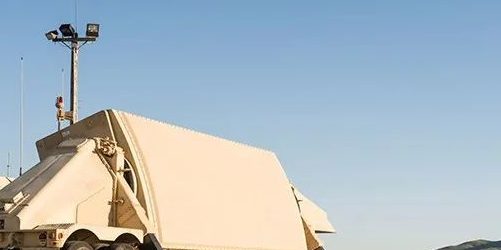The Coronavirus pandemic that has ravaged the world has not only dealt a heavy blow to America’s diplomatic image and economic strength, but has also hit the Pentagon’s military build-up hard. In addition to the well-known cases of the usS Roosevelt being infected over the past year, the Coronavirus outbreak has brought several advanced U.S. military equipment projects to a standstill.
What the old drivers are talking about today is this hapless project, known as the “strongest anti-missile radar ever” and the “long-range identification radar” (LRDR) tailored to curb The Intercontinental Missiles between China and Russia. Defense News said on May 1st that a report released by the U.S. Government Accountability Office showed that the radar, which had been scheduled to be operational by 2020, would not be able to conduct critical actual flight tests for the next year and would be delayed in developing an initial combat capability.
In recent years, China’s nuclear strike capability has become a thorn in the Pentagon’s side, and the U.S. military has spared no effort to develop targeted interceptors. In particular, detection and early warning radars for anti-missile systems, such as sea-based X-band radars, TPY-2 radars used in thaad anti-missile systems, SPY-1D radars used in upgraded Aegis interceptor systems… There are so many tricks that the old driver can’t remember.

But in the Pentagon’s eyes, these radars are deficient, such as insufficient detection accuracy, small surveillance range, and so on. So the U.S. military has been building what it calls “the strongest anti-missile radar ever” in Alaska since 2015. This is an S-band active phased array radar, is currently the world’s largest active phased array radar, the number of T/R units will also reach 100,000 orders of magnitude, far more than the general sense of land-based / ship-borne radar system. The radar not only has the characteristics of long detection distance, but also has a strong target recognition ability. In addition, the “long-range identification radar” will also be used for space situational awareness, orbital target observation and cataloguing, improve the U. S. military’s space combat capabilities.
In short, the “long-range identification radar” is very good and powerful, it is deployed at Kriel Air Force Base in Alaska, in theory, any intercontinental missile flying from Eurasia to the United States can not escape its surveillance, but also has a strong false target recognition capability, can greatly enhance the United States mid-range anti-missile intercept capability.
In other words, the increase in U.S. anti-missile capabilities by such early warning radars will greatly weaken the strategic deterrence capabilities of China-Russia intercontinental missiles.
However, the U.S. Government Accountability Office said that after the March 2020 outbreak in the U.S., the construction site of the Remote Identification Radar went into a “watchful state” — leaving only a few people on site “to prevent critical materials from being damaged by bad weather.” Since then, the program has been slow to progress, and flight testing, which was supposed to take place in the third quarter of fiscal 2021, will be delayed until at least the last quarter of fiscal 2022.
That’s not good news for the Pentagon, which is eager to improve its strategic early warning capabilities to China and Russia.
The United States, which had been watching Coronavirus pandemic rage around the world, is finally on fire.
At least when the Remote Identification Radar project is delayed, the old driver wants to say, live.



